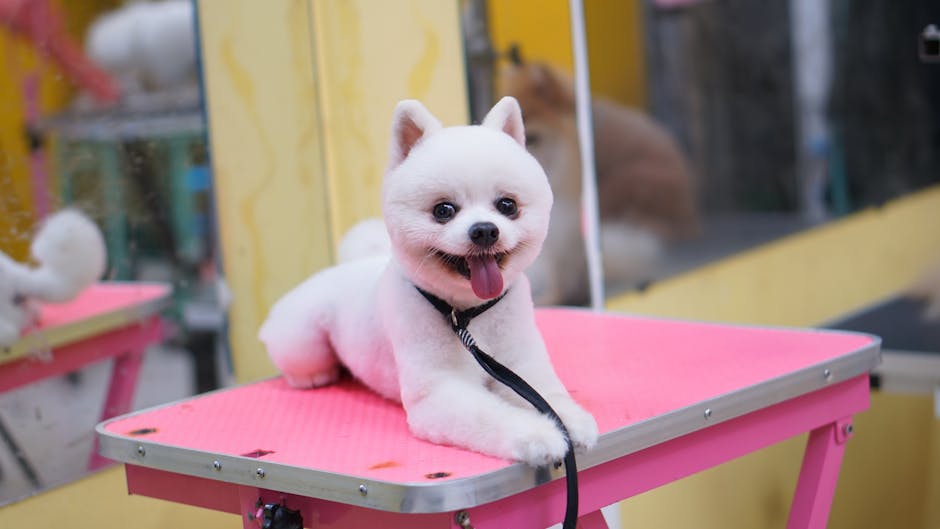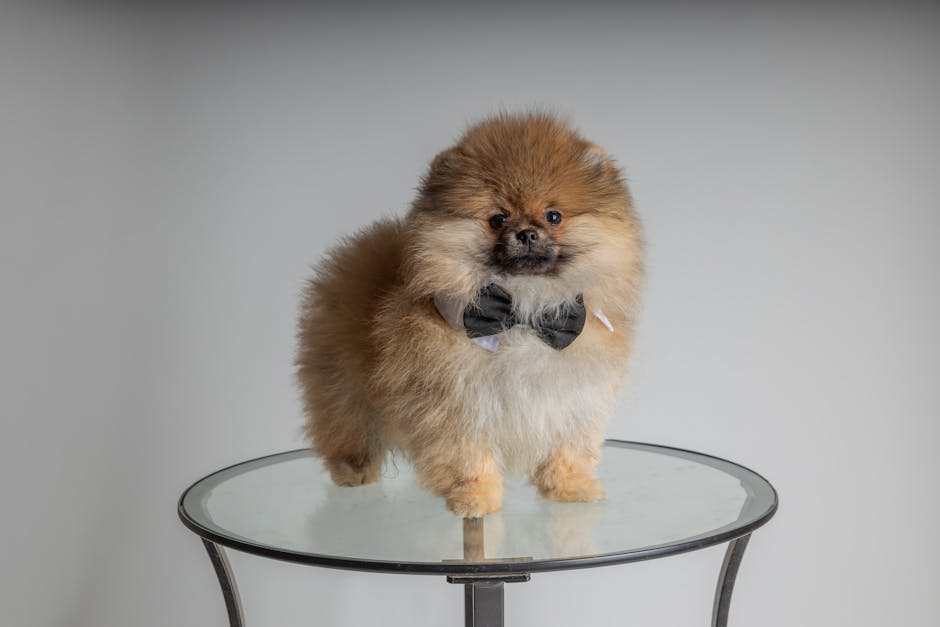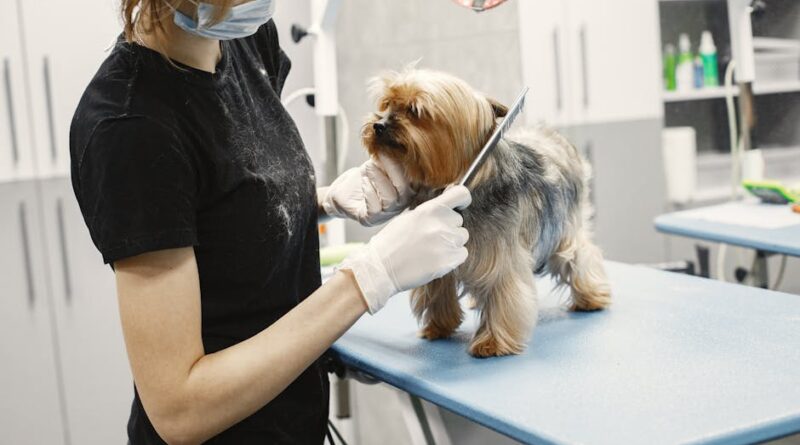Tips for Grooming Small Dog Breeds
Small dog breeds are beloved for their adorable size, playful personalities, and undeniable charm. Whether you have a Chihuahua, a Pomeranian, a Maltese, or any other small breed, grooming is a crucial aspect of caring for your furry friend. Proper grooming not only keeps your dog looking their best but also promotes their overall health and well-being. In this comprehensive guide, we will delve into the essential tips for grooming small dog breeds, covering everything from brushing and bathing to nail trimming and ear cleaning.
The Importance of Grooming Small Dog Breeds

Grooming is not just about maintaining your dog’s appearance; it is also essential for their health and comfort. Small dog breeds, with their dense coats and delicate skin, require regular grooming to prevent matting, tangling, and skin irritations. Regular grooming sessions provide an opportunity to check for any signs of skin problems, infections, or parasites, allowing you to catch any issues early and seek veterinary care if needed.
Additionally, grooming helps to distribute natural oils throughout your dog’s coat, keeping it healthy and shiny. It also helps to reduce shedding, minimize allergens in your home, and strengthen the bond between you and your furry companion. By making grooming a part of your dog’s routine, you can ensure they stay clean, comfortable, and happy.
Brushing and Combing

One of the most important aspects of grooming small dog breeds is regular brushing and combing. Different breeds have different coat types some have long, silky fur, while others have short, wiry coats. The frequency and type of brush or comb you use will depend on your dog’s specific coat type.
For long-haired breeds like Maltese or Shih Tzu, daily brushing is essential to prevent matting and tangles. Use a slicker brush or a comb with wide-spaced teeth to gently remove any knots and debris from the coat. Start at the tips of the hair and work your way up to the roots, being careful not to pull or tug on the hair.
Short-haired breeds like Chihuahuas or Boston Terriers may not require daily brushing, but a weekly session with a soft-bristle brush can help remove loose hair and distribute natural oils. Brushing also stimulates the skin and promotes healthy circulation, which is beneficial for your dog’s overall health.
Bathing

While small dog breeds may not get as dirty or smelly as larger dogs, regular baths are still important to keep their coat clean and healthy. The frequency of baths will depend on your dog’s lifestyle a dog that spends a lot of time outdoors may need more frequent baths than a primarily indoor dog.
Use a mild dog shampoo that is specifically formulated for small breeds to avoid skin irritation. Before bathing your dog, brush out any tangles or mats and place cotton balls in their ears to prevent water from entering. Use lukewarm water to wet your dog’s coat thoroughly, then apply shampoo and lather gently. Rinse thoroughly to remove all traces of shampoo, as leftover residue can cause skin irritation.
After bathing, towel dry your dog and use a hairdryer on a low setting to dry their coat completely. Be careful not to use high heat or hold the dryer too close to your dog’s skin, as this can cause burns. Regular baths will keep your small dog looking and feeling fresh, but be mindful not to overdo it, as excessive bathing can strip the natural oils from their coat.
Nail Trimming

Trimming your small dog’s nails is an essential part of grooming that is often overlooked. Overgrown nails can cause discomfort, affect your dog’s gait, and even lead to joint problems over time. Regular nail trimming helps to maintain your dog’s paw health and prevents painful ingrown nails.
Invest in a good quality pair of nail clippers designed specifically for small dogs. Make sure to have styptic powder on hand in case you accidentally cut the quick the sensitive blood vessel inside the nail. To trim your dog’s nails, gently hold their paw and clip the tip of each nail, being careful not to cut too close to the quick. If you’re unsure about how to trim your dog’s nails, consider seeking guidance from a professional groomer or veterinarian.
Ear Cleaning
Small dog breeds are prone to ear infections due to their floppy ears and limited air circulation. Regular ear cleaning helps to remove dirt, wax buildup, and moisture that can create a breeding ground for bacteria and yeast. Check your dog’s ears weekly for signs of redness, swelling, discharge, or a foul odor, which may indicate an infection.
To clean your dog’s ears, use a veterinarian-approved ear cleaning solution and cotton balls. Gently lift your dog’s ear flap and apply the cleaning solution to the ear canal. Massage the base of the ear to help loosen any debris, then use a cotton ball to wipe away dirt and excess solution. Be careful not to insert anything into your dog’s ear canal, as this can cause injury or push debris further inside.
Regular ear cleaning can help prevent ear infections and keep your small dog’s ears healthy and odor-free. If you notice any signs of an infection, such as redness, swelling, or discharge, consult your veterinarian for proper diagnosis and treatment.
Teeth Brushing
Just like humans, dogs need regular dental care to maintain oral health and prevent dental problems. Small dog breeds are especially prone to dental issues due to their small mouths and crowded teeth. Brushing your dog’s teeth regularly can help prevent plaque buildup, tartar formation, and bad breath.
Use a dog-specific toothbrush and toothpaste to brush your dog’s teeth, as human toothpaste can be toxic to dogs. Start by getting your dog used to the taste of the toothpaste by letting them lick a small amount off your finger. Once they are comfortable with the taste, introduce the toothbrush and gently brush their teeth in a circular motion. Focus on the outer surfaces of the teeth, as this is where plaque and tartar tend to accumulate.
Make teeth brushing a positive experience for your dog by rewarding them with treats or praise after each session. Aim to brush your dog’s teeth at least 2-3 times a week to maintain their oral health. If your dog is resistant to teeth brushing, consider dental chews or toys that help to clean their teeth and freshen their breath.
Professional Grooming
While regular at-home grooming is essential for small dog breeds, there are times when professional grooming is necessary. Professional groomers have the skills, tools, and expertise to provide a thorough grooming session that goes beyond what you can achieve at home. They can trim your dog’s coat, style their fur, clean their ears, trim their nails, and even express their anal glands.
If you’re unsure about how to groom your small dog or if your dog has a particularly challenging coat, consider scheduling regular grooming appointments with a professional groomer. They can assess your dog’s grooming needs, recommend the appropriate grooming schedule, and provide personalized care that suits your dog’s specific requirements.
Common Misconceptions About Grooming Small Dog Breeds
There are several misconceptions about grooming small dog breeds that can lead to ineffective or harmful grooming practices. One common misconception is that small dogs don’t need regular grooming because of their size. In reality, small dogs often have dense coats that require regular brushing and maintenance to prevent matting and skin issues.
Another misconception is that grooming is only about appearance and not essential for your dog’s health. While grooming can certainly help your dog look their best, it also plays a crucial role in maintaining their overall health and well-being. Regular grooming sessions allow you to check for any signs of skin problems, infections, or parasites that may otherwise go unnoticed.
It’s important to debunk these misconceptions and emphasize the importance of proper grooming for small dog breeds. By understanding the benefits of grooming and implementing a regular grooming routine, you can ensure that your small dog stays happy, healthy, and well-groomed.
FAQs About Grooming Small Dog Breeds
1. How often should I groom my small dog?
The frequency of grooming will depend on your dog’s specific coat type and lifestyle. Long-haired breeds may require daily brushing to prevent matting, while short-haired breeds may only need weekly brushing. Regular baths, nail trims, ear cleaning, and teeth brushing should also be part of your dog’s grooming routine.
2. Can I use human grooming products on my small dog?
It’s always best to use grooming products that are specifically formulated for dogs, as human products can be too harsh or contain ingredients that are toxic to dogs. Look for dog-specific shampoos, toothpaste, ear cleaning solutions, and nail clippers to ensure your dog’s safety and well-being.
3. What should I do if my small dog is resistant to grooming?
If your dog is hesitant or fearful of grooming, take it slow and make the experience positive for them. Use treats, praise, and patience to gradually acclimate them to grooming sessions. If your dog continues to resist, consider seeking help from a professional groomer or a certified dog trainer.
Conclusion
Grooming is an essential aspect of caring for small dog breeds, ensuring they look their best and stay healthy. From brushing and bathing to nail trimming and ear cleaning, following these grooming tips can help you maintain your dog’s hygiene and well-being. By incorporating regular grooming sessions into your dog’s routine, you can strengthen your bond with them and ensure they lead a happy and comfortable life.
Remember, grooming is not just about aesthetics it’s about overall health and wellness. So, take the time to groom your small dog regularly, and they will thank you with wagging tails and wet kisses!




